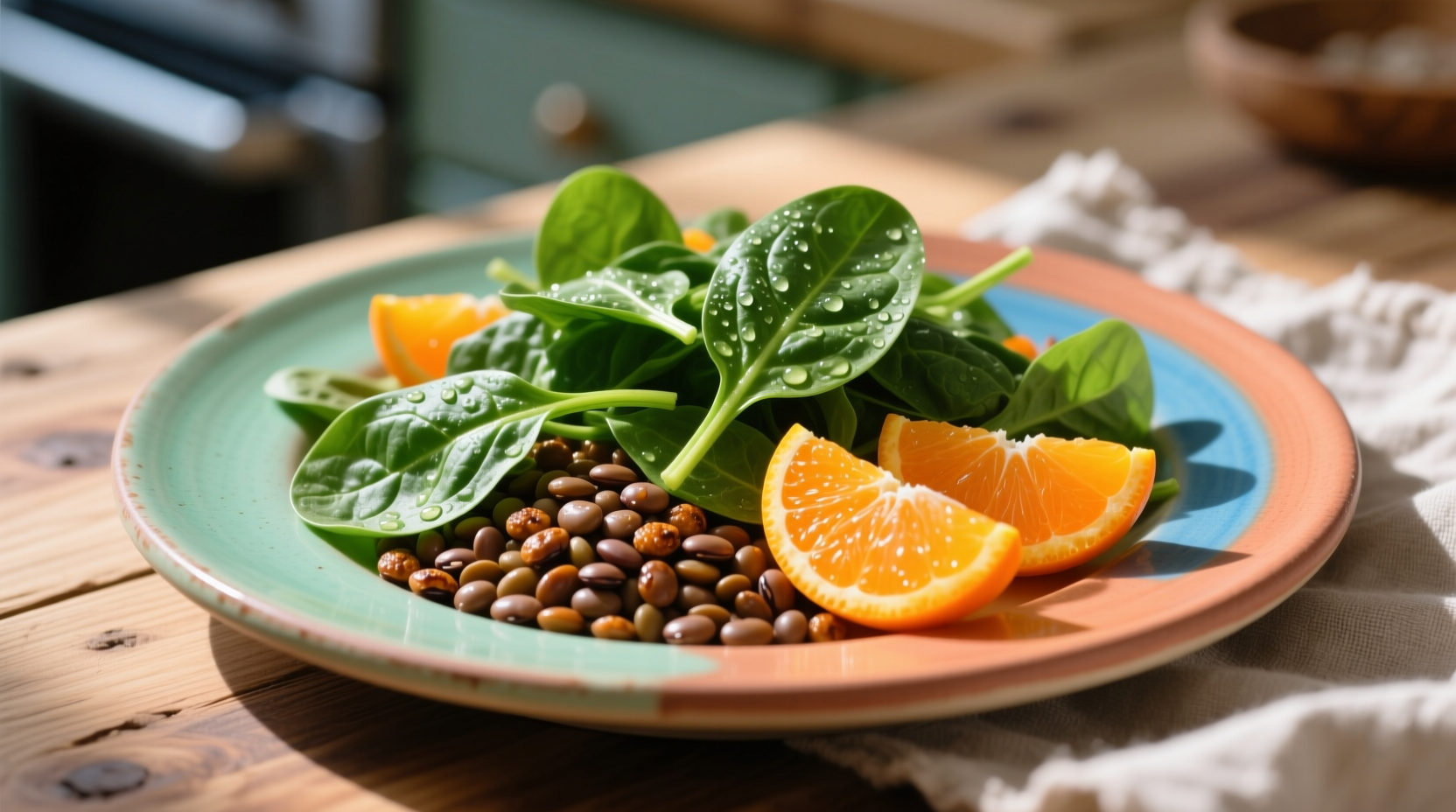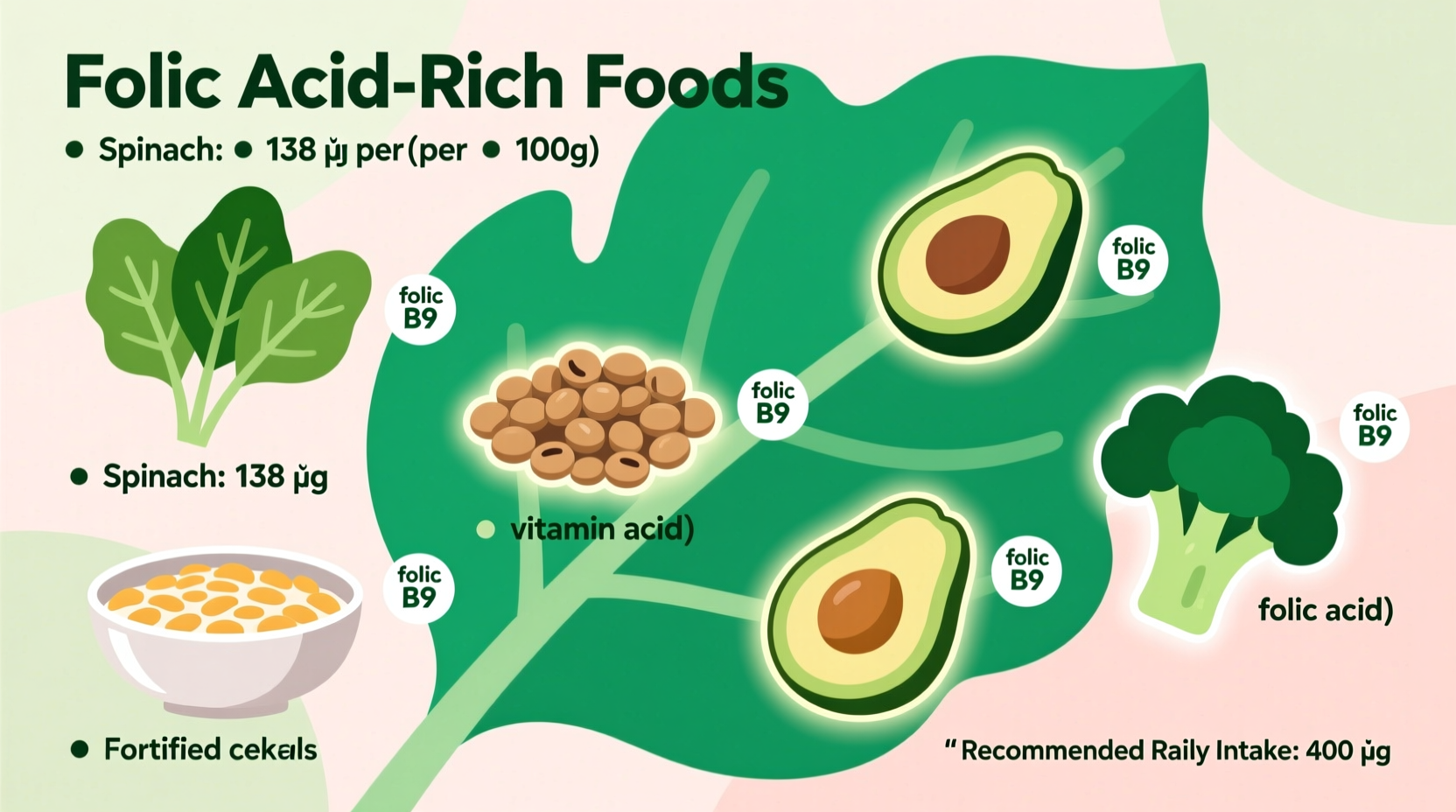Leafy greens like spinach and kale, legumes including lentils and black beans, and citrus fruits such as oranges are among the top natural food sources rich in folic acid. Just one cup of cooked lentils provides 90% of your daily folic acid needs, while a medium orange delivers approximately 10% of the recommended daily intake.
When you're searching for what foods are rich in folic acid, you need reliable information that directly impacts your health decisions. Folic acid—vitamin B9 in its synthetic form—is essential for DNA synthesis, red blood cell formation, and preventing neural tube defects during early pregnancy. This comprehensive guide delivers scientifically-backed food sources with precise measurements so you can make informed dietary choices without confusion or misinformation.
Why Folic Acid Matters More Than You Think
Folic acid plays a critical role in cellular function that extends far beyond pregnancy nutrition. While healthcare providers emphasize folic acid supplementation for women who are pregnant or planning pregnancy (reducing neural tube defect risk by up to 70%), this vital nutrient supports everyone's health. Your body uses folic acid to produce healthy red blood cells and prevent anemia, support brain function, and maintain proper nerve signaling.
According to the National Institutes of Health Office of Dietary Supplements, adults need 400 micrograms (mcg) of dietary folate equivalents (DFE) daily. Pregnant women require 600 mcg DFE, while breastfeeding mothers need 500 mcg DFE. The challenge? Many people don't realize that naturally occurring folate in foods has lower bioavailability than synthetic folic acid in supplements—making food selection even more critical.

Natural Food Sources Ranked by Folic Acid Content
Understanding which foods deliver the most folic acid per serving helps you maximize nutritional benefits. This evidence-based ranking comes from the USDA FoodData Central database, the most reliable source for nutrient composition information.
| Food Source | Serving Size | Folic Acid (mcg DFE) | % Daily Value |
|---|---|---|---|
| Beef liver | 3 ounces | 215 | 54% |
| Edamame (soybeans) | 1 cup | 482 | 121% |
| Lentils | 1 cup cooked | 358 | 90% |
| Black beans | 1 cup cooked | 256 | 64% |
| Spinach | 1 cup cooked | 263 | 66% |
| Asparagus | 1 cup | 268 | 67% |
| Broccoli | 1 cup cooked | 168 | 42% |
| Avocado | 1 medium | 121 | 30% |
| Brussels sprouts | 1 cup cooked | 156 | 39% |
| Orange | 1 medium | 40 | 10% |
Maximizing Folic Acid Absorption From Your Food
Knowing which foods contain high levels of folic acid is only half the equation. How you prepare and combine these foods significantly impacts how much your body actually absorbs:
- Steam rather than boil vegetables - Water-soluble vitamins like folate leach into cooking water. Steaming preserves up to 90% of folate content compared to boiling's 40-60% retention
- Pair with vitamin C-rich foods - Consuming folate-rich foods with citrus fruits or bell peppers increases absorption by up to 25%
- Avoid excessive heat - Prolonged cooking destroys folate. Quick sautéing preserves more nutrients than slow simmering
- Choose raw when appropriate - Raw spinach contains more folate than cooked (115 mcg vs 66 mcg per cup), though you'd need to eat larger volumes
Special Considerations: When Food Sources Aren't Enough
While focusing on natural food sources of folic acid should be your first approach, certain situations require additional considerations:
Pregnancy and conception planning: The CDC recommends women capable of pregnancy take 400 mcg of folic acid daily from supplements or fortified foods in addition to food sources. This is because neural tube development occurs in the first 28 days of pregnancy—often before women know they're pregnant.
Genetic factors: Approximately 10-15% of the population has the MTHFR gene mutation that impairs folate conversion. These individuals benefit from methylfolate supplements rather than standard folic acid, though food sources remain valuable.
Medication interactions: Certain medications like methotrexate (used for autoimmune conditions) and some antiepileptic drugs interfere with folate metabolism, requiring higher intake under medical supervision.
Practical Meal Planning With Folic Acid Rich Foods
Incorporating these foods into your daily routine doesn't require drastic changes. Try these simple strategies for increasing folic acid through diet:
- Start your day with a spinach and orange smoothie (spinach + citrus = enhanced absorption)
- Replace regular rice with lentil pilaf for main meals
- Snack on roasted chickpeas instead of processed chips
- Add black beans to salads and soups
- Include asparagus or broccoli as regular side dishes
- Use avocado as your primary fat source instead of oils
A Mediterranean-style diet naturally incorporates many folate-rich foods. Research published in the Journal of Nutritional Science shows this eating pattern provides approximately 400-600 mcg of folate daily without supplementation—meeting or exceeding recommended levels for most adults.
Folic Acid vs. Folate: Understanding the Difference
Many people confuse folic acid with folate, but they're not identical:
- Folate refers to the naturally occurring form found in foods (polyglutamate form)
- Folic acid is the synthetic form used in supplements and fortified foods (monoglutamate form)
The body absorbs folic acid more efficiently (85-100%) than natural folate (50%), which explains why fortified foods and supplements play important roles despite the benefits of whole food sources. However, some research suggests that unmetabolized folic acid may have negative health effects when consumed in excess without adequate vitamin B12.
Frequently Asked Questions About Folic Acid Rich Foods
Here are answers to the most common questions people have when searching for foods high in folic acid:
Which fruit has the highest folic acid content?
Oranges contain the highest folic acid content among common fruits, providing about 40 mcg per medium fruit (10% of daily needs). However, papaya and mango also offer significant amounts, with one cup of papaya delivering approximately 53 mcg and mango providing around 71 mcg.
How can vegetarians get enough folic acid?
Vegetarians can easily meet folic acid requirements through legumes, dark leafy greens, asparagus, broccoli, avocado, and fortified grains. One cup of cooked lentils provides 90% of daily needs, making it an excellent plant-based source. Combining these foods with vitamin C-rich options enhances absorption.
Does cooking destroy folic acid in foods?
Yes, cooking can reduce folic acid content, particularly water-based methods like boiling. Up to 50-90% of folate can be lost during boiling as it leaches into water. Steaming, quick sautéing, or consuming raw (when appropriate) preserves more folate. Frozen vegetables often retain more folate than fresh due to flash-freezing at peak ripeness.
What are the symptoms of folic acid deficiency?
Early folic acid deficiency symptoms include fatigue, weakness, irritability, difficulty concentrating, and shortness of breath. Severe deficiency causes megaloblastic anemia with abnormally large red blood cells. In pregnancy, deficiency increases risk of neural tube defects in the developing fetus. Blood tests measuring serum folate and homocysteine levels provide definitive diagnosis.
Are fortified foods a good source of folic acid?
Yes, fortified foods like enriched breads, cereals, and pasta provide significant folic acid. In countries with mandatory folic acid fortification (like the US since 1998), these foods have reduced neural tube defects by 25-50%. However, whole food sources offer additional nutrients and fiber not found in fortified products, so a combination approach works best for most people.











 浙公网安备
33010002000092号
浙公网安备
33010002000092号 浙B2-20120091-4
浙B2-20120091-4